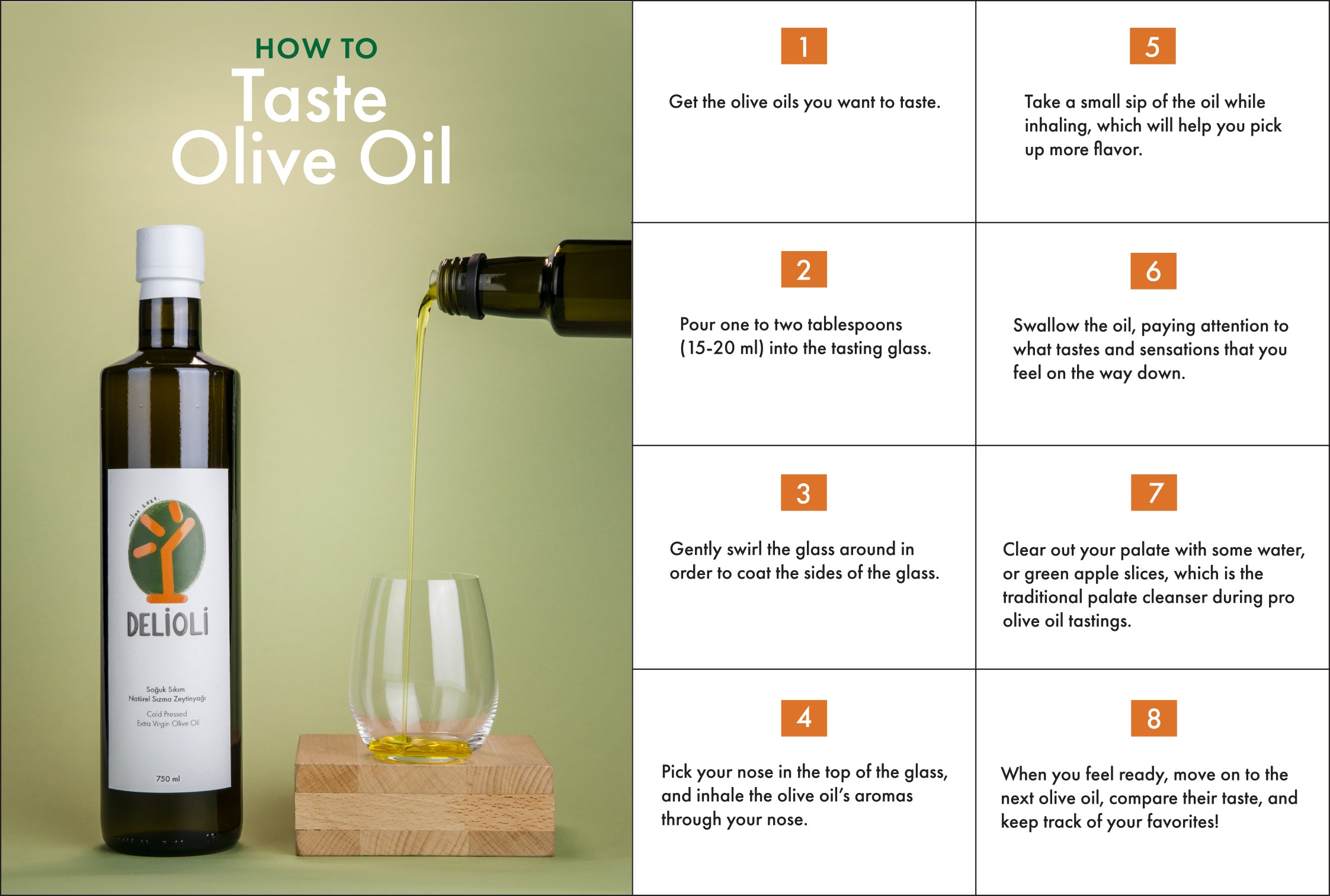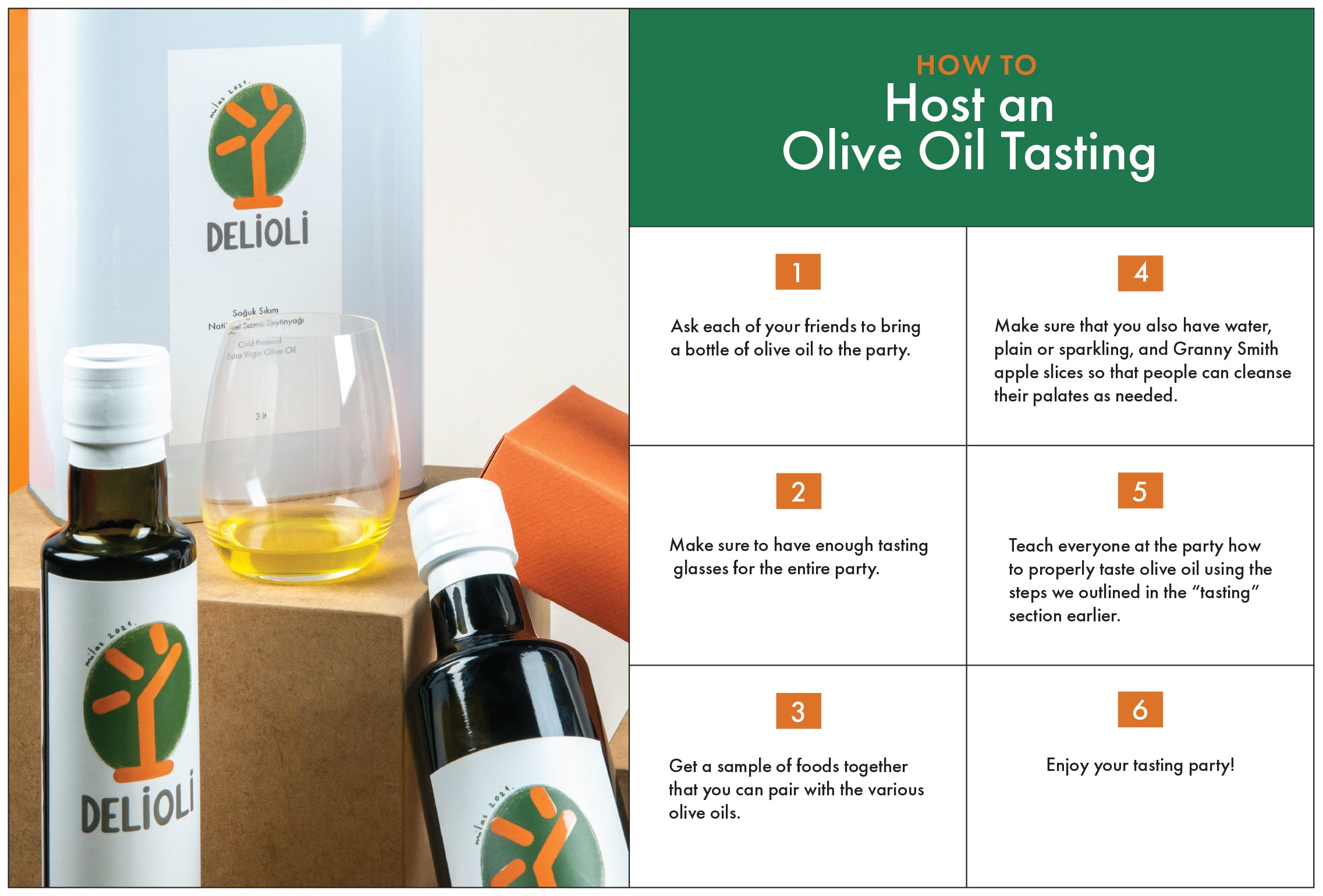Olive Oil
Olive Oil 101: Fundamentals
Extra Virgin Olive Oil (EVOO) is the liquid gold of the Mediterranean. When an olive oil is “Extra Virgin”, it means it is free of taste defects and will pass a battery of tests in a lab. It also means the juice of olives, and nothing else. High-quality extra virgin olive oil not only tastes delicious, but also boasts greater health benefits. Its health benefits have been discovered and confirmed in countless studies, and almost everything it graces becomes more delicious.
SOURCES
-THE OLIVE OIL TIMES
The Essential Guide to Extra Virgin Olive Oil
-HARVARD HEALTH
Is extra-virgin olive oil extra healthy?
Olive oil: Can it lower your risk of dying early?
-FOOD CHEMISTRY
Frying in Virgin Olive Oil Adds Healthy Compounds, Researchers Find
Frying in Extra Virgin Olive Oil
-THE OLIVEOIL.COM
Beginner’s guide to Olive Oil Tasting
Tasting olive oil is a very delicate process. You can improve your sensitivity to olive oil flavors with practice over time, but you need to do it the right way to get the most benefit out of your olive oil tasting. In this guide, we will walk you through each step of olive oil tastings. You can instantly make your next dinner party more interactive with hosting your own olive oil tasting.
How to Taste Olive Oil

1. Get the olive oils you want to taste. We recommend choosing small bottles that hail from different regions and are made using different olives. This will allow you to spot the differences between them and to broaden your olive oil palate.
2. Pour one to two tablespoons (15-20 ml) into the tasting glass. Hold the glass in your left hand and cover the top with your right. This will warm up the olive oil, causing it to release more aromas.
3. Gently swirl the glass around in order to coat the sides of the glass and help release the olive oil’s aromatic compounds. Notice the viscosity (or lack thereof) of the oil.
4. Pick your nose in the top of the glass, and inhale the olive oil’s aromas through your nose, and make a note of what it smells like. Is it bitter? Fruity? Strong or mild?
Some specific aromatic and flavor descriptors used by olive oil pros include:
- Fresh-cut grass
- Green apple
- Tomato leaf
- Herbaceous (fresh green leafy)
- Green or ripe banana
- Floral
- Buttery
- Nutty
- Green olive
- Ripe olive
There are also smells that indicate your oil may be low quality, or stale:
- Rancid: stale nuts, putty or crayons
- Musty: mildew or mushrooms
- Fusty: the smell of anaerobic fermentation, similar to decaying vegetation
- Winey: wine, vinegar or nail polish aromas from aerobic fermentation
5. Take a small sip of the oil while inhaling, which will help you pick up more flavor. Make sure to sip enough oil to fully coat your tongue. Let the oil sit for just a moment, noting any flavors as you noted the aromas in the previous step.
6. Swallow the oil, paying attention to what tastes and sensations that you feel on the way down. Pungency can be detected in the throat, like peppery sensation when you eat hot chilies. Pungency is a positive characteristic of olive oil. That pungent, sharp feeling is caused by the antioxidant-rich polyphenols found in high quality olive oils. In certain olive oils, the pungency can be strong enough to trigger the coughing reflex. You may also notice some bitterness, which is a common note in olive oils, especially those made from younger, greener olives. Finally, look out for fruity notes, which also includes nutty, buttery and a fuller spectrum of green fruity notes. The intersection of these three elements — pungency, bitterness and fruitiness – is what gives each olive oil its distinctive taste.
7. Clear out your palate with some water, or green apple slices, which is the traditional palate cleanser during pro olive oil tastings. Bread doesn't do much to cleanse the palate, but it will absorb some oil and give the taste buds a break.
8. When you feel ready, move on to the next olive oil, compare their taste, and keep track of your favorites!
How to Host an Olive Oil Tasting

Hosting an olive oil tasting for your friends is a fun and tasty twist on usual dinner. Here is what you need to do to in order to host an olive oil tasting party:
1. Ask each of your friends to bring a bottle of olive oil to the party. Try to aim for a mix of regions so you will all be able to sample the full breadth of olive oils.
2. Make sure to have enough tasting glasses for the entire party. Ideally, they should be opaque not to be influenced by the color of the olive oil, but wine glasses could work too.
3. Get a sample of foods together that you can pair with the various olive oils. Like, warm boiled potatoes, fresh mozzarella, ripe tomatoes, bread, warm cooked white beans, green salads, seasonal cooked vegetables, grilled steak, poached or grilled chicken; pretty much whatever is for dinner. Cook things simply, without a lot of added seasonings, but be sure you have some sea salt on hand.
4. Make sure that you also have water, plain or sparkling, and Granny Smith apple slices so that people can cleanse their palates as needed.
5. Teach everyone at the party how to properly taste olive oil using the steps we outlined in the “tasting” section earlier.
6. Enjoy your tasting party!
